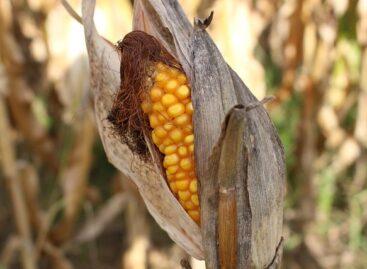There is enough of domestic chrysanthemums
The vast majority of the domestic chrysanthemum crop will be sold at the end of October and the first of November. This year, fewer than average, about 14 million chrysanthemums were produced in Hungarian nurseries. Despite this, according to the surveyed growers and distributors, there will be enough goods of both potted and cut varieties – according to the overview of the National Chamber of Agriculture.

(Photo: Pixabay)
In an average year, it is estimated that about 12 million large-flowered chrysanthemums (Palisade, Creamis, etc.) will find buyers, and 1.5-2 million medium-large-flowered chrysanthemums will find buyers. In addition, bouquet varieties – which are in demand all year round – and potted varieties are also available. While white was by far the most popular in the past, today there is an increasing demand for green and bicolor (mixed colors – red-white, yellow-orange, purple-pink, etc.). The trend varies from region to region: in Western Hungary, the pompon type is popular, in the Great Plain and Trans-Tisza, the sunflower-like Eleonora. In recent years, the demand for smaller prefabricated wreaths has also increased, which can be attributed to the increased proportion of urn graves.
Chrysanthemums prefer temperatures around 17 degrees Celsius during their development
Although there was no very long-lasting heat wave this summer, the plants were hit by drastically strong 850-watt light on some days, which meant an extreme strain. Furthermore, the producers’ job is also made more difficult by the fact that the EU has banned – often unjustifiably – several effective plant protection products. Given the highly seasonal nature of chrysanthemums, their cultivation, logistics and sales also require serious organization and tight timing. Most of the producers are aging, and due to its complexity and high exposure, few of the younger farmers are taking up chrysanthemum cultivation.
In Hungary, chrysanthemum cultivation is basically typical near large cities
Significant production areas include Dabas, Lajosmizse, Kecskemét and their surroundings, where the white variety is typical, while the resistant creamy white Creamist is preferred around Nyíregyháza and Szeged. Small-scale local cultivation is also typical throughout the country, unfortunately in most places with outdated methods and decades-old technology. Due to climate change, it is particularly important in general that producers use controlled propagation material and that they apply modern, environmentally friendly plant protection solutions. In addition, it would be important to strengthen the domestic supply of propagation material by reorganizing horticultural research, breeding and variety maintenance.
NAK
Related news
Seed Association: Organic farming on a growth path
🎧 Hallgasd a cikket: Lejátszás Szünet Folytatás Leállítás Nyelv: Auto…
Read more >Csaba Gyuricza: Farmers cannot afford to wait
🎧 Hallgasd a cikket: Lejátszás Szünet Folytatás Leállítás Nyelv: Auto…
Read more >MATE researchers have found a solution for the utilization of mycotoxin-contaminated corn
🎧 Hallgasd a cikket: Lejátszás Szünet Folytatás Leállítás Nyelv: Auto…
Read more >Related news
Premium drink, premium literature
🎧 Hallgasd a cikket: Lejátszás Szünet Folytatás Leállítás Nyelv: Auto…
Read more >Responsible Gastro Hero Foundation: a sourdough and kombucha sharing campaign
🎧 Hallgasd a cikket: Lejátszás Szünet Folytatás Leállítás Nyelv: Auto…
Read more >Style, language and tools
🎧 Hallgasd a cikket: Lejátszás Szünet Folytatás Leállítás Nyelv: Auto…
Read more >







